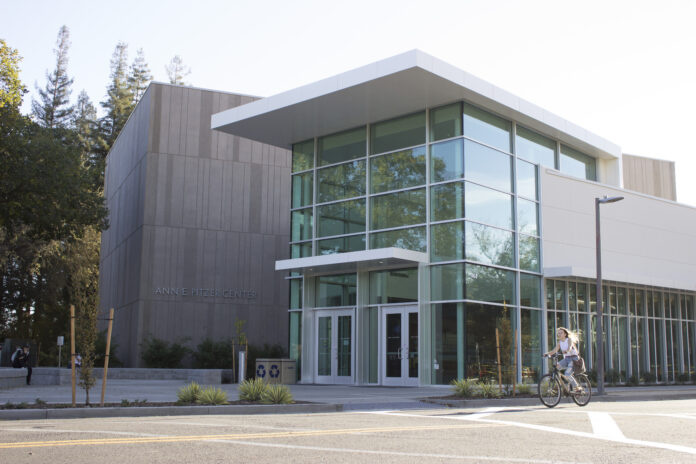Harpsichordist Faythe Vollrath performs a wide selection of pieces, from classical fugues to popular Halloween music
By Sarah Han — arts@theaggie.org
On Oct. 27, harpsichordist and UC Davis lecturer in music Faythe Vollrath gave a performance at the Recital Hall in Ann E. Pitzer Center in honor of Halloween. From pieces by Bach to Rorem, she demonstrated the various capabilities of the harpsichord.
The performance began with “Prelude in B minor, BWV 923” by Johann Sebastian Bach. The piece immediately started with quick, successive notes, which gave the illusion of dynamics, even though the harpsichord can’t actually produce them. Vollrath utilized a lot of facial expressions, which helped establish the intense, dramatic and subtle sections of the piece. The piece itself consisted of variations of the main theme, which was unexpected but engaging.
Vollrath then played Domenico Scarlatti’s “Sonata in G minor, K. 31” and “Fuga in G minor ‘Cat Fugue’ K.30.” The sonata had a choppy beginning, with short spurts of chords that grabbed the audience’s attention. A falling set of notes followed these chords, creating a nice contrast. The Fuga, on the other hand, was distinctively fluid. The last note was particularly dissonant, and Vollrath did a great job in making the usual harpsichord sound, which is quite choppy and detached, sound connected and streamlined.
The next piece was “Carnival of the Souls” by Verne Langon. What stood out to me the most was the bassline, which was structured yet different with every phrase. This established the typical creepy mood of Halloween, which was a nice change from more classical pieces. The audience seemed to notice the Halloween aspects in the piece, which created a light-hearted atmosphere in the hall.
Following that piece was “Larghetto in G minor, Inspired by Mozart” by Rosemary Brown. Contrary to “Carnival of the Souls,” this piece was far more melancholic and empathetic. Vollrath played in such an emotional way that I felt as though I understood the composer’s thoughts when writing the music.
Vollrath played “Jekyll and Hyde” by James Dorsa next, which was the complete opposite pace of the previous song; there were dramatic pauses in the beginning, unexpected, almost rampage-like spurts of notes in the middle and pleasant running notes sprinkled throughout the piece. This is one aspect I noticed and enjoyed about Vollrath’s performance — she ordered songs of different tones and pace to create a contrast and keep the performance engaging.
Fraçois Couperin’s “Les ombre errantes from the twenty-fifth ordre” came next. I noticed that the entire piece consisted of similar variations of a single melody. The tone was despondent yet accepting because of the mixture of major and minor sections. This was definitely my favorite piece out of the entire performance.
Changing the pace, Vollrath performed “Danse Macabre” by Camille Saint-Saëns next. In this piece particularly, the harpsichord resembled the harp, especially in the beginning. Whether Vollrath did that intentionally or not, I enjoyed listening to a different sound from the harpsichord. The piece itself had a Halloween feel, with a progressively fast rhythm that sounded like someone creeping up on you. The audience also joined in by snapping every beat, which was entertaining.
The performance ended with “Spiders” by Ned Rorem; indeed, the individual notes sounded like spiders speedily creeping around. In honor of Halloween, I thought that this piece was not only appropriate but also a spirited way to end the performance.
Overall, I enjoyed “The Macabre: A Harpsichord Halloween” very much. Although I wasn’t a fan of the harpsichord’s sound initially, after this performance, I grew to enjoy it a lot more. Vollrath showcased her talents through various pieces of music and I definitely recommend attending her concerts, as well as other performances hosted by the Ann E. Pitzer Center.
Written by: Sarah Han — arts@theaggie.org




